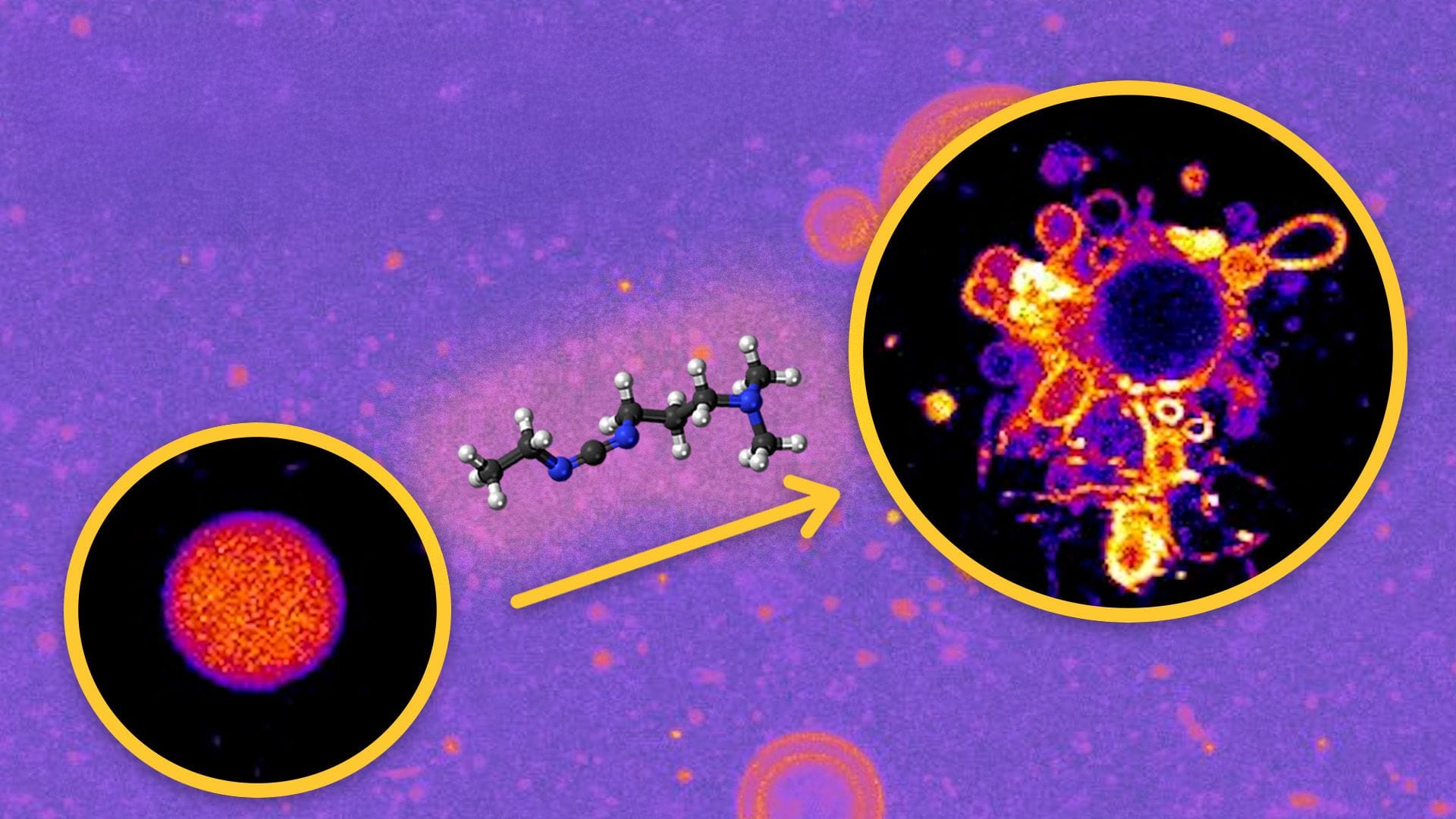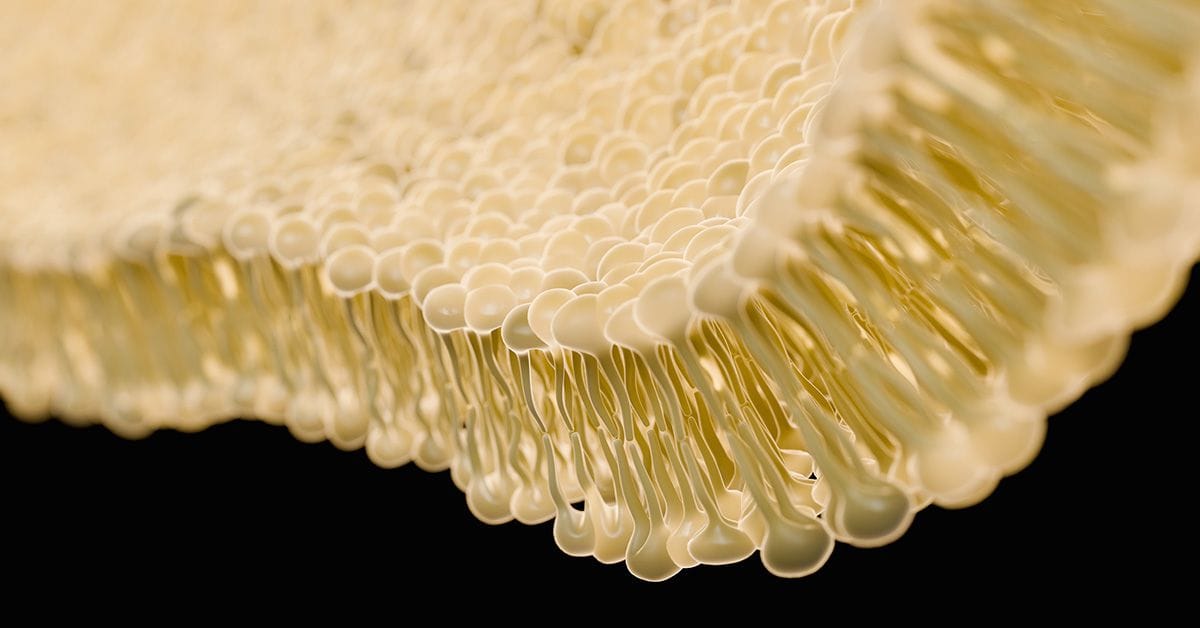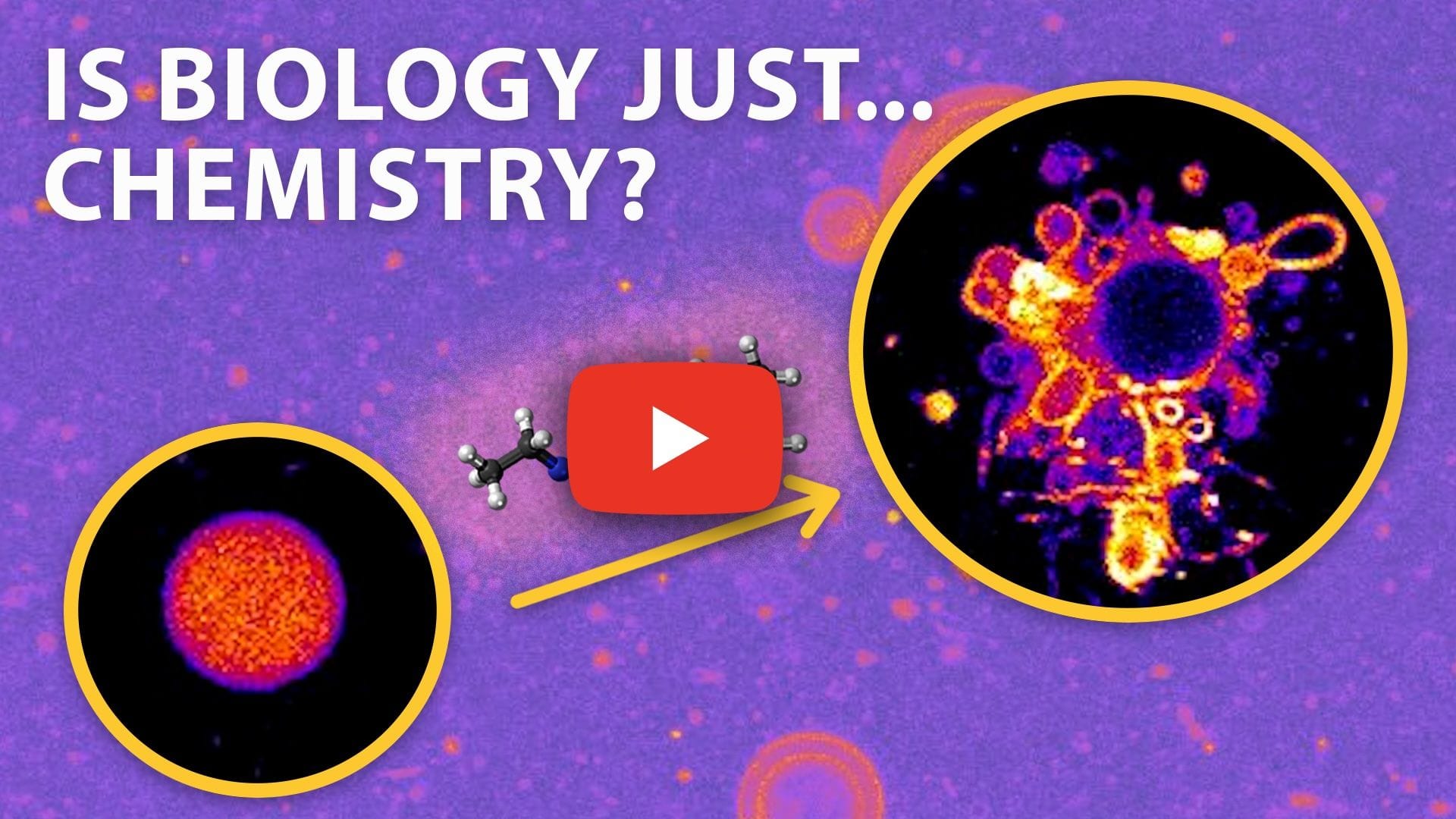Discover how simple vesicles—powered by chemical energy—can mimic protocell division processes, offering insights into the origins of life and advancements in synthetic biology.

Life, in its most fundamental form, requires the ability to divide and replicate. The origin of the first cells is one of the biggest unsolved mysteries in science. Even the oldest fossils we can find—cyanobacteria going back 3.5 billion years—show cells that had already evolved the intricate networks of proteins and enzymes that modern cells rely on to function and divide. So how did the earliest forms of life manage to carry on without the sophisticated machinery of modern cells? A recent study published in the Journal of the American Chemical Society sheds light on this phenomenon, exploring how simple vesicular structures, similar to the earliest protocells, can divide using chemical energy.
The researchers, working out of the Technical University of Munich, Germany, focused on fatty acid-based vesicles, which are thought to resemble early protocells. They created the vesicles using a succinic acid derivative, which forms vesicles at a pH above 4.5, and then initiated a reaction cycle by adding carbodiimide. The reaction cycle partially converted the amphiphilic molecules in the vesicles into oily anhydride molecules, which then rapidly hydrolyzed back to the original form. This dynamic process led to the local production of excess amphiphilic molecules, causing the vesicles to form buds and create smaller "daughter" vesicles—and the team caught it all on video! Check out the Headline Science short below for a glimpse into this fascinating process:
The team found that by adjusting the concentration of the chemical fuel, they could finely control the division of the vesicles. This process was robust across different types of fatty acids, suggesting that such mechanisms could have been widespread in early protocells. Importantly, the vesicles retained their encapsulated materials during division, mimicking the behavior of living cells. The authors note that their results have profound implications for better understanding the origins of life. Additionally, these findings have great potential in the field of synthetic biology, offering a foundation for one day developing synthetic cells capable of autonomous division.
Watch more Headline Science on YouTube!
The video above is brought to you by the ACS Science Communications team. To watch more exciting videos and shorts covering some of the latest research in ACS journals, visit the Headline Science page on YouTube.
Video credits:
Written and produced by Anne Hylden
Edited by Darren Weaver and Vangie Koonce
Animation by Darren Weaver
Narrated by Emily Schneider
Produced by Vangie Koonce and Andrew Sobey
Executive produced by Matthew Radcliff
Research videos from Pablo Zambrano, Ph.D.
Explore related content from ACS Publications
Blog Posts

The Intricate Choreography Happening Inside Our Cells
ACS Journal Articles
Chemically Triggered Reactive Coacervates Show Life-Like Budding and Membrane Formation
Sudeep Koppayithodi and Nishant Singh*
DOI: 10.1021/jacs.4c16416
Electrophysiological Characterization of Monoolein-Fatty Acid Bilayers
Caroline Scott, Riley Porteus, Shoji Takeuchi, Toshihisa Osaki*, and Sunghee Lee*
DOI: 10.1021/acs.langmuir.4c03814
Synthetic Lipid Biology
Po-Hsun Brian Chen, Xiang-Ling Li, and Jeremy M. Baskin*
DOI: 10.1021/acs.chemrev.4c00761
Biomimetic Materials to Fabricate Artificial Cells
Haisheng Peng*, Man Zhao, Xiaoying Liu, Tianjian Tong, Wenyuan Zhang, Chen Gong, Ratul Chowdhury, and Qun Wang*
DOI: 10.1021/acs.chemrev.4c00241
How Droplets Can Accelerate Reactions─Coacervate Protocells as Catalytic Microcompartments
Iris B. A. Smokers, Brent S. Visser, Annemiek D. Slootbeek, Wilhelm T. S. Huck, and Evan Spruijt*
DOI: 10.1021/acs.accounts.4c00114
A Carbodiimide-Fueled Reaction Cycle That Forms Transient 5(4H)-Oxazolones
Xiaoyao Chen, Michele Stasi, Jennifer Rodon-Fores, Paula F. Großmann, Alexander M. Bergmann, Kun Dai, Marta Tena-Solsona, Bernhard Rieger, and Job Boekhoven*
DOI: 10.1021/jacs.3c00273
Thermally Driven Membrane Phase Transitions Enable Content Reshuffling in Primitive Cells
Roger Rubio-Sánchez, Derek K. O’Flaherty, Anna Wang, Francesca Coscia, Gianluca Petris, Lorenzo Di Michele, Pietro Cicuta, and Claudia Bonfio*
DOI: 10.1021/jacs.1c06595
Plausible Sources of Membrane-Forming Fatty Acids on the Early Earth: A Review of the Literature and an Estimation of Amounts
Zachary R. Cohen*, Zoe R. Todd, Nicholas Wogan, Roy A. Black, Sarah L. Keller, and David C. Catling*
DOI: 10.1021/acsearthspacechem.2c00168

